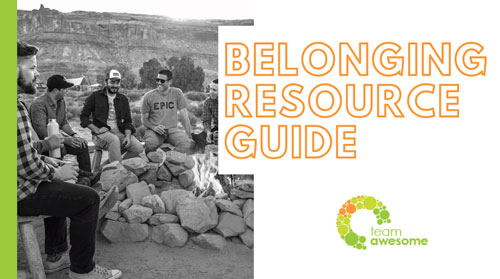Our intentions have always been good to add more women to the higher ranks of leadership roles. We’ve all meant well. And, we could be doing more right where we are to take more meaningful and effective action.
The struggle I see is we are taking small steps forward and feeling accomplished enough with those incremental improvements. Most larger companies have one woman on the board or in a C-suite role, and we settle in on that progress. The reality is that women represent 50% of the population, and we would do well to not settle in until we represent 50% of the leadership roles.
There is plenty of literature and research available on how we arrived here, which I don’t need to rehash. It is now commonly accepted that we all benefit from expanding diversity in our leadership roles. Yet, we feel stuck on what change actually needs to look like to get the equal representation we are seeking. Here are some ways we can refocus our efforts this year. To make an impact, just pick one and create significant influence in your organization.
Not Just Diversity, but Inclusion
Improving the percentage of women in leadership roles is not enough, because it doesn’t tell the whole story. Having female representation in top jobs is important so that junior women can visualize the path when they see someone “like them”. But just being at the top does not measure their engagement, career satisfaction, or their feeling of belonging.
According to Laura Sherbin and Ripa Rashid in their recent HBR article, Diversity Doesn’t Stick Without Inclusion, “45% of women off-ramp to take care of children…with 24% leaving to care for aging relatives. But a significant number of women also feel pushed off the ladder: 29% say their career isn’t satisfying, and 23% feel stalled in their careers.” The lack of inclusion and a missing sense of belonging undoubtedly causes some of the 45% who leave for childcare, because working in a job or company that isn’t meaningful or satisfying when you could be with your own tiny humans is a tough pill to swallow.
If women, even in the top jobs, don’t feel deeply supported to be caregivers to other humans around them, we will continue to leave. This is pertinent to men as well, as parents or caregivers to aging parents. With Baby Boomers aging and their children now taking on executive leadership roles, change in how we support and include parents, caregivers, and humans with responsibilities outside of the workplace is an inevitable and necessary change. The change needs to be true support, words backed up by setting the example, not just lip service or “flexible work environments” that are quietly discouraged for senior leaders. C-suite leaders are just as capable of a flexible work arrangement, should be supported to do so without penalty, and frankly, could demonstrate that it is “okay” to the rest of the organization.
Women are Missing Out on Coaching
Companies often hire executive coaches for the C-suite or executive level leadership as an advanced form of leadership development. So, what happens when we only have one, or zero, women in the top executive roles? No women get coaching.
Instead, we must get creative about how we spend our resources and use the infrastructure already in place. If you company has a women’s Employee Resource Group (ERG) or other leadership support in place, make sure that you are first, funding it sufficiently, and second, using that group to actually advance women in leadership roles. Use funding to hire executive coaching or other leadership development that is usually focused on the top leaders. This is a practice in “acting as if your goal is already happening.” If we want women to excel to the top roles, let’s use the resources to treat them as if they are already there. Hire the coach, send them to the conference, or connect them with a two-level-up mentor.
Know What Women Supporting Women Looks Like
Find ways within your organization, or outside your four walls, to connect women leaders to other women in an environment where women truly support each other. Find and invest in communities where women lead by example in bringing other women with them, in knowledge-sharing, advocating or sponsoring them in their career growth, and driving systemic change in our organizations. This is not as common as it sounds, but when you see the real deal, you know it. There are plenty of women’s organizations (both in house and in the community) that perpetuate the same “meet monthly over lunch without real social change” that we are trying to break here.
What does women supporting women look like at high level leadership roles? It looks like this:
- High-powered, rock star women in the community actively mentoring emerging women leaders
- Confidential, peer mentor circles of equally amazing women to bring each other forward
- Women showing up for each other, even when it is unclear how it will turn out for themselves
- Women finding other emerging women leaders to advocate for and sponsor for growth
- Top level executives watching for, and creating change, to policies and culture to support the inclusion of women, parents, and families
When there are few to only one woman in top leadership roles, it can be natural to have a scarcity mindset, where women feel they are competing against each other for the one spot rather than 50% of the leadership roles. When we compete against each other instead of bringing each other up, no one wins. If you don’t have your tribe of women leaders who bring each other up, seek one out and you will all push each other to be change makers.
This may be simple, but never easy. If we commit to taking deep and targeted action on even just one of these areas, the outcome can be an entirely new culture and look on women in leadership roles. If we try and do 5% of each, we will continue our trend of mediocre incremental improvement year after year. Let’s put our resources to work where we can actually begin to make change in 2018.
About the author:
Katie Rasoul is the Chief Awesome Officer for Team Awesome, a leadership coaching and culture consulting firm. Find out more by visiting www.teamawesomecoaching.com or join the Team Awesome Community for awesomeness coming straight to your inbox. Follow Team Awesome on Facebook and Twitter.



Thank you! Thank you for the many truths you have shared with us here. Not often has an article on LinkedIn brought me to tears, but this has definitely made an impression. We can and must do better! We are the women our daughters and granddaughters will refer to… what story will they read? Will the headlines reflect empowerment or defeat? Let us empower those of us who are overcome with integrity and passionate about diversity and inclusion. Again, thank you, for these truths, but most of all, thanks for being you!!
Thanks for the note, Andrea! We can do better, and we are in a unique position for change right now, so it is a conversation worth having. Thank you for reading!